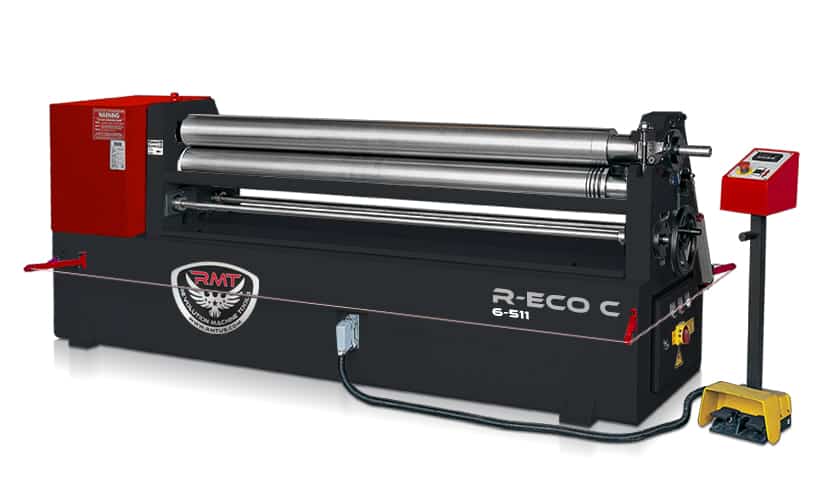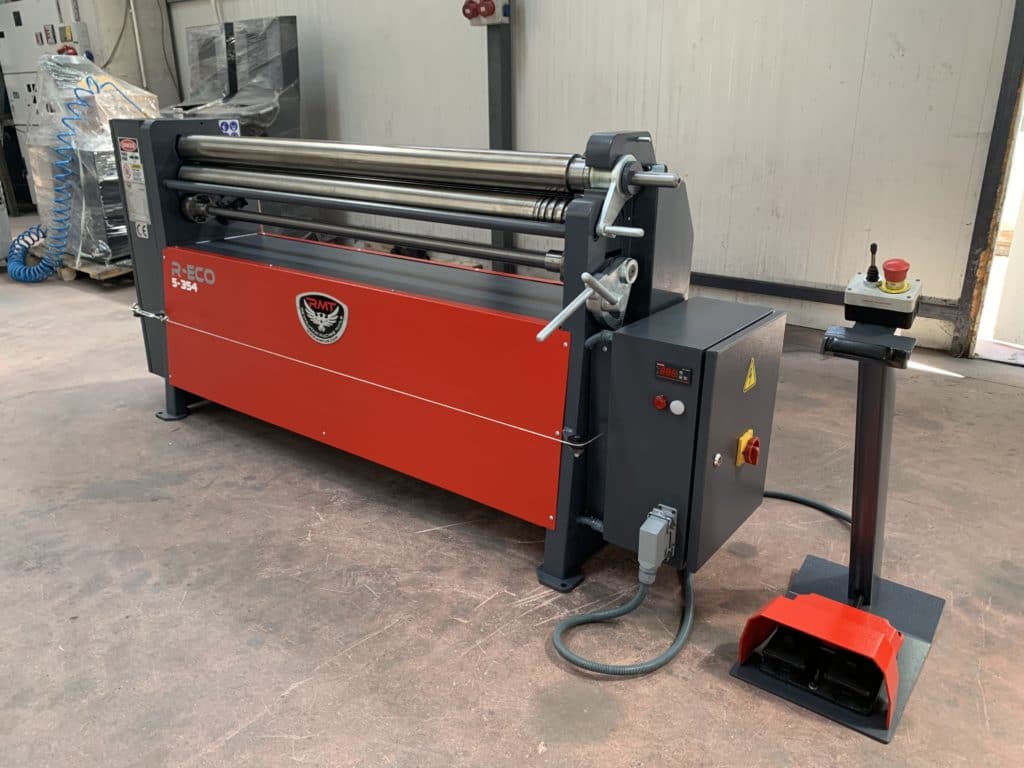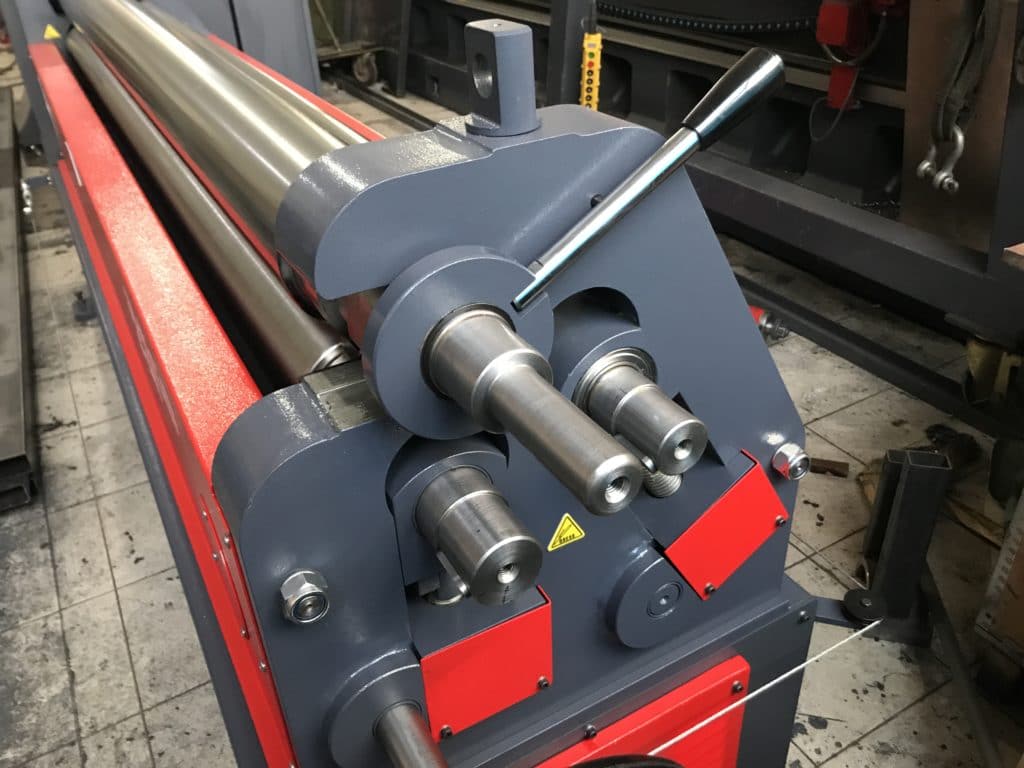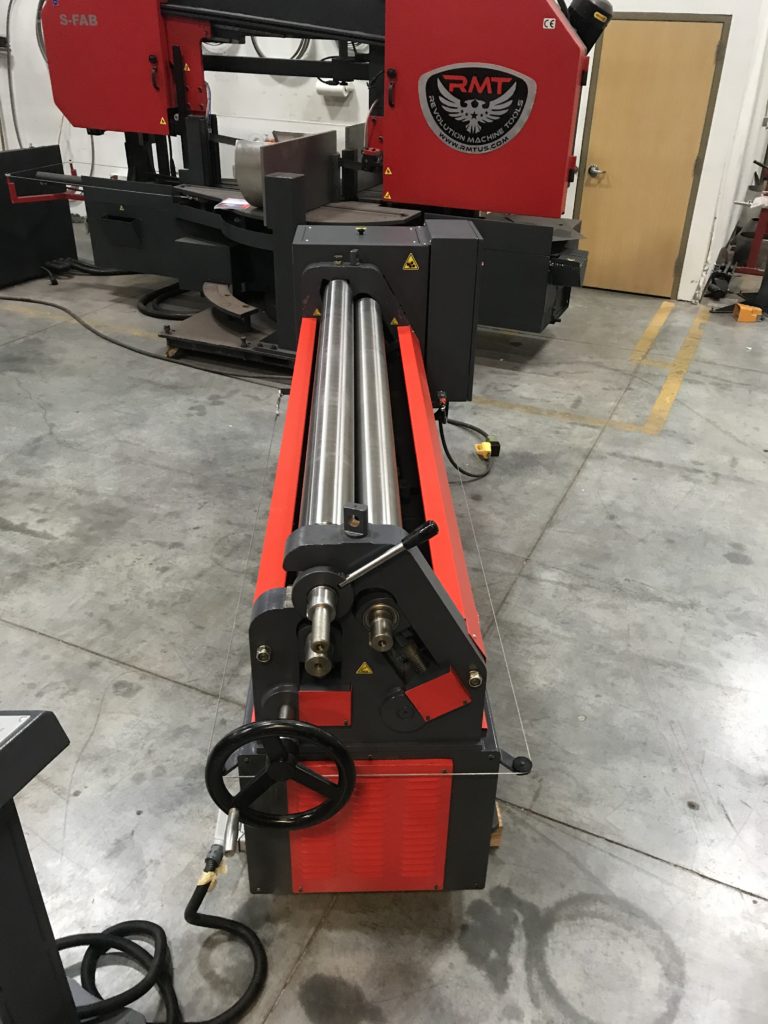The Value Roll for Fabricators
A standard fixture in most fabrication shops is either a sheet metal roll or a plate roll, both of which are used to bend a flat piece of metal into a cylinder, cone or other curving shape. While traditionally such machines have functioned with three bending rolls that secure and contour the material, the onset of 4-roll plate rolling technology, with its offer of greater precision and productivity, has changed the plate roll marketplace considerably compared to the 3-roll plate roll.
With the availability of 4-roll machines, a beginning fabricator might wonder if there is any reason to consider purchasing a classic 3-roll. The answer is a resounding “yes,” mostly due to the major benefit found in 3-roll benders—value. Almost without exception, the cost of a new three-roll machine is much lower when compared with a similar capacity 4-roll.
In the world of previously-owned plate rolls, an additional benefit becomes immediately apparent for the frugal shopper—there are far more used three-roll machines on the market than four-rolls, some dating back many decades. With fewer moving parts, refurbishing a used 3-roll plate roll is also easier.
When it comes to light gauge fabrication work, a 4-roll machine will be overkill in most circumstances as well. Four-roll benders were developed with high production runs of thick material in mind. Three-roll machines will long remain the standard for sheet metal work.
How Would You Like Your Rolls Arranged?
In shopping for a three-roll machine, it’s important for a fabricator to understand that they come in different roll configurations:
- True Pyramid. This is the granddaddy of plate rolls, taking the “pyramid” name from the shape of the roll formation, with a single roll at the top flanked by two lower rolls at either side. This is considered a symmetrical plate roll since the front and the back arrangement of the rolls appears identical when viewed from the end of the machine. While the top roll can move up and down, both lower rolls are fixed in position, so true pyramid machines are unable to pre-bend a workpiece, leaving long flat areas at either end of the plate. More modern styles of pyramid rolls with moveable bottom rolls have been developed in recent decades, which is why these originals are called “true pyramids.” Few if any of these machines are built today, but they can be found in the used market.
- Initial Pinch. This style of three-roll bending machine is generally used for rolling lighter gauge material. When fabricators talk about a “slip roll,” they usually have this type of machine in mind. Often referred to simply as an “I.P. roll,” this machine is a prime example of an asymmetrical roll, since the front of the machine features two rolls, one on top of the other, while the back of the machine has a single roll. The “initial pinch” name comes from the front rolls that clamp or pinch the material as it initially is loaded into the machine. The offset forming roll in the back adjusts position in relation to the other two rolls to create the desired radius, though the metal usually needs to be passed through the rolls several times to produce the shape. Material can be loaded horizontally—rather than on an angle, which is awkward to do—and initial pinch rolls have the ability to pre-bend a workpiece to eliminate most of the flat spot, though it does require removing and reloading the sheet in order to pre-bend both ends. While a large number of the initial pinch rolls on the market are powered by an electro-mechanical motor, hydraulic powered models are available for use with thicker plate and hand-crank versions can be found for use with thin gauge material. This type of roll is also called a single initial pinch roll to distinguish it from a double pinch roll.
- Double Pinch. This type of three-roll plate roll is also called by the seemingly contradictory terms double-pinch pyramid plate roll (because of the configuration of one top roll and two lower rolls) and double-initial-pinch plate roll (because the material can be loaded and “pinched” from either side). Unlike true pyramid rolls, however, the top roll of a double pinch machine stays stationary while the two lower rolls move up and down. Depending on the model, the lower roll movement is either in a straight line towards the top roll (a rectilinear plate roll) or in an arcing curve (a planetary plate roll). The double-pinch design allows pre-bending of both ends of the workpiece without the need to remove it from the machine, a huge advantage. Four-roll plate rolls are also double pinch machines but have an additional roll directly below the top roll to keep the workpiece secure at all times.
All three configurations are also available as vertical format plate rolls that extend upwards, allowing large diameters such as storage tanks to be produced.
Variable Geometry Plate Rolls
There is one more significant three-roll configuration to be considered, namely variable geometry plate rolls.
Usually purchased for heavier jobs involving thick plates, these unique machines have two lower side rolls that move horizontally in relation to the vertically moving top roll, changing their offset distance. This adjustable geometric arrangement of the rolls gives these machines distinct advantages over normal three-roll plate rolls:
- Just like using a wider V-die with a press brake, less tonnage is required for rolling material the further apart the bottom rolls are from each other. This allows heavier material to be rolled on these machines, giving users up to 50% greater rolling capacity than a comparable three-roll or even four-roll machine.
- Tighter diameters can be rolled in thinner material if the side rolls are brought in close to the top roll.
- Material can be loaded parallel to the ground—not tilted, as required with a double pinch machine—making material handling safer and easier.
- All rolls are driven on a standard variable geometry plate roll, providing improved control over the bending process than could be accomplished with a plate roll that has non-powered idle rolls.
- Deflection can be dealt with better using one of these machines, since changing the geometry of the lower rolls alters the pressure on the top roll, eliminating the need for the operator to shim or perform other crowning compensation.
- Standard variable geometry machines allow their rolls to be moved at an angle, creating an ideal configuration for cone rolling.
- Because of the tremendous pressure that can be exerted by the rolls, some customers have actually purchased variable geometry rolls to use primarily as pressing rolls for straightening plates.
Variable geometry plate rolls, while not cheap, are very versatile rolls that can perform a variety of functions on a wide range of metal thicknesses.
Are Three Rolls too Many? How About Two?
In all this talk of 3-roll and 4-roll plate rolling machines, it’s worth noting that two-roll machines also exist in the current market and have their place in modern fabrication.
While two metal rolls alone don’t do much for curving a sheet of metal, a metal top roll with a flexible bottom roll coated with urethane or a similar substance is very effective in rolling light gauge metal. While limited to rolling cylinders and half cylinders—cones and other more complex geometric shapes aren’t supported on a 2-roll—the elasticity of the bottom roll allows very small diameters to be created, often in a single pass.
Because the bottom roll conforms to the shape of the top roll, no pre-bending is needed to create a perfect cylinder, and the material of the bottom roll doesn’t scratch the outer surface of the rolled parts. Two-roll machines can also be set up with automatic feeding and discharging systems for high-speed batch production.
Considerations in Purchasing a 3-Roll Machine
When buying a three-roll plate or sheet metal roll, there are additional factors besides roll configuration to look at, namely:
- What is the length of your longest workpiece?
- What is the thickest workpiece that you need to roll? (And in what material?)
- Since it takes more pressure, what is the thickest material that you need to pre-bend?
- What is the thinnest material you need to roll?
- What is the tightest diameter that you need in a finished part?
- What accommodation exists for extracting the workpiece? (Drop-end yoke, etc.)
- Do you want hardened rolls for greater durability? (A really good idea.)
- Do you need ground rolls to avoid marring the workpiece?
- Do you need a cone-rolling device to assist with that process?
- Do you need side or overhead supports for working with larger diameters?
- Do you need any automation for your production?
- Does the machine have a portable control panel that the operator can reposition?
- Do you want an NC or CNC control? (If so, you really need a 4-roll machine.)
- What safety devices does the machine have?
- Are your operators trained and skilled to use the machine in question?
One other factor to consider when equipping your shop with a metal rolling machine: unlike a press brake that can bend anything from its largest capacity on down, based on the tooling that’s being used, the tooling on a plate roll or sheet metal roll are the rolls themselves, and usually can’t be changed out to accommodate smaller diameters. That’s why many shops will have more than one roll on the floor to work with different thicknesses and diameters. Rather than looking for a one-size-fits-all machine, you may want to weigh the option of purchasing two machines, depending on your circumstances.
From light gauge HVAC work to producing thick-walled drums and tanks, three-roll machines contribute significantly to the metalworking industry and finding the right one for your needs will definitely improve your operation’s profitability.









